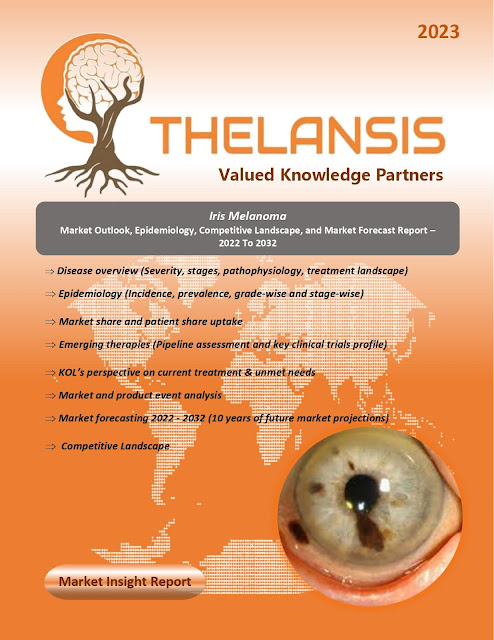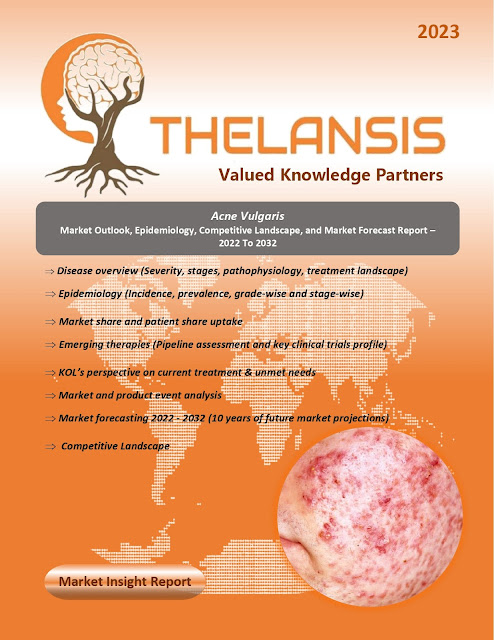Iris Melanomas – Market Outlook, Epidemiology, Competitive Landscape, and Market Forecast Report – 2022 To 2032
Iris melanomas originate from melanocytes found within the iris stroma. They tend to be more prevalent among individuals with light skin and blue irides. The majority (around 80 percent) of iris melanomas manifest in the lower quadrant of the iris. These tumors can exhibit diverse characteristics, ranging from well-defined to diffuse, with either lobular or flat growth patterns and varying pigmentation that spans from deeply pigmented to lacking in pigment (amelanotic). The primary indicator of iris melanoma is a dark spot on the iris. Additional symptoms might encompass alterations in pupil shape, the perception of floaters, blurry vision, and ocular discomfort. Risk factors for developing iris melanoma contain fair skin, red or blond hair, and blue or green eyes, all of which correlate with fewer melanocytes. This malignancy also shows an elevated prevalence in individuals afflicted by the following conditions Atypical mole syndrome, Dysplastic nevus syndrome, and Ocular or oculodermal melanocytosis. The prevalent subtype of iris melanoma is characterized by spindle-shaped cells, followed by a mixed-cell type that combines spindle and epithelioid cells. Generally, the metastasis of iris melanoma is uncommon, although extension beyond the eye and elevated intraocular pressure are deemed as metastatic risk factors. Overall, the prognosis for iris melanoma tends to be favorable. The five-year survival rate for patients diagnosed with iris melanoma exceeds 90 percent. Treatment strategies for iris melanoma encompass the following options includes Vigilant monitoring, Surgical interventions, such as resection or enucleation, and Plaque radiation therapy, employed for tumors not amenable to surgical removal.
·
Among uveal melanomas, iris melanoma occupies
the least frequent site (constituting 2-5 percent). The reported incidence
ranges from 0.2 to 0.9 cases per million individuals.
Thelansis’s “Iris Melanomas Market
Outlook, Epidemiology, Competitive Landscape, and Market Forecast Report – 2022
To 2032" covers disease overview, epidemiology, drug utilization,
prescription share analysis, competitive landscape, clinical practice,
regulatory landscape, patient share, market uptake, market forecast, and key
market insights under the potential Iris Melanomas treatment modalities options
for eight major markets (USA, Germany, France, Italy, Spain, UK, Japan, and
China).
KOLs insights
of Iris Melanomas across 8 MM market from the centre of Excellence/ Public/
Private hospitals participated in the study. Insights around current treatment
landscape, epidemiology, clinical characteristics, future treatment paradigm,
and Unmet needs.
Iris Melanomas Market Forecast Patient
Based Forecast Model (MS. Excel Based Automated Dashboard), which Data Inputs
with sourcing, Market Event, and Product Event, Country specific Forecast
Model, Market uptake and patient share uptake, Attribute Analysis, Analog
Analysis, Disease burden, and pricing scenario, Summary, and Insights.
Thelansis Competitive Intelligence (CI) practice
has been established based on a deep understanding of the pharma/biotech
business environment to provide an optimized support system to all levels of
the decision-making process. It enables business leaders in forward-thinking
and proactive decision-making. Thelansis supports scientific and commercial
teams in seamless CI support by creating an AI/ ML-based technology-driven
platform that manages the data flow from primary and secondary sources.




Comments
Post a Comment